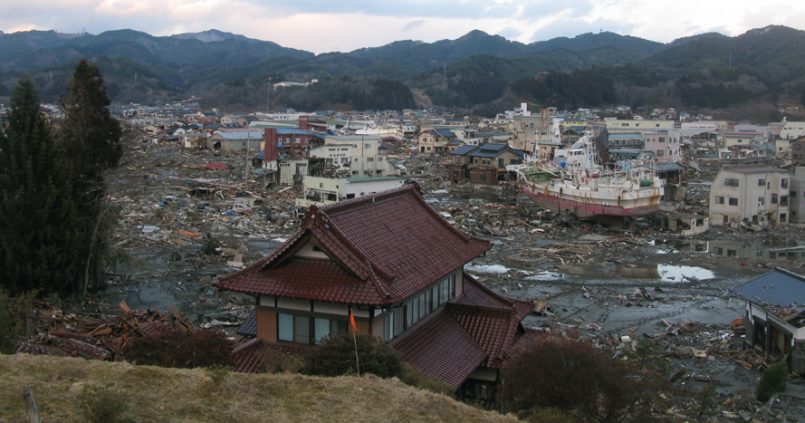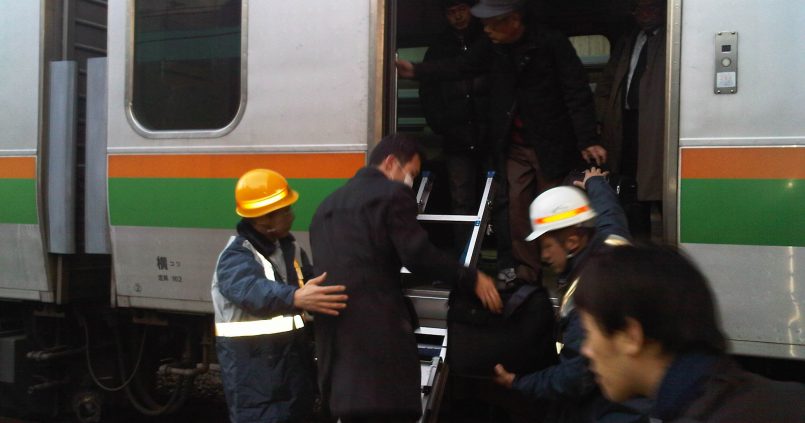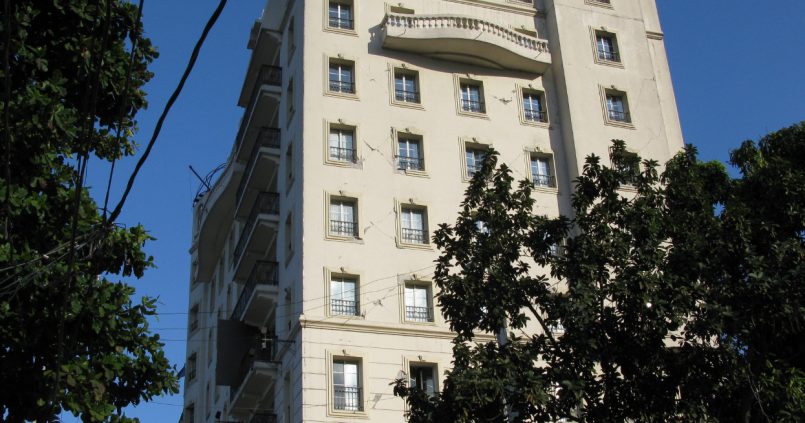This post is part of a series called The 2011 Tōhoku Earthquake
SENDAI, Japan–An ancient inlet valley surrounded by snowy mountains appears before me at sunset. But the smell of oil and death burns my nose at the same time. An old fisherman approaches me and points in the distance. “You see those three oil tanks out there? Those tanks created all the deaths here. A 10-meter tsunami overcame the seawall, and it destroyed the tanks and spilled oil into the bay. The oil caught on fire, and it became a hell of fire and water.”
The bay turned out…
This post is part of a series called The 2011 Tōhoku Earthquake
SENDAI, Japan–I pick up a fragment of a small shell from a sandy beach. This brings back memories from 30 years ago, when I camped here. It was a sunny and warm summer day then. Today, the beach of Arahama is cold. This community was hit by a massive 10-meter tsunami last Friday. The area behind me looks as if a nuclear bomb blast just happened. Everything was wiped out. Debris is everywhere. Dusk is coming, and snow is starting to fall heavily, with a strong mountain wind.…
This post is part of a series called The 2011 Tōhoku Earthquake
TOKYO, Japan–My super packed train has stopped again. I am in the middle of Tokyo heading to Shibuya to catch a van to the North. The threat of a power outage has changed the train schedule. People are getting sick in the trains, since so many people are packed in tightly together and the train frequently stops due to sudden schedule changes.
I sense a dark cloud of stress hovering over this well organized, advanced society. This earthquake disaster is evolving into something much more than anyone expected…
A Magnitude 8.9 Earthquake Rocks Tōhoku, Tsunami Devastates Sendai, State of Emergency Declared in Japan
Case Studies Earthquake Field Reports Japan
This post is part of a series called The 2011 Tōhoku Earthquake
TOKYO, Japan–I was in the train near Ikebukuro station when the train suddenly stopped with a loud creaking noise at 2:55 pm today. Japan’s state-of-the-art earthquake system at work…. That’s what I thought at first. But it has been a struggle since. It is 1:30 am now and we are still not far from where the train stopped. Japan Railway actually closed down the stations and sent out all commuters into the cold night. They announced that they are concerned about structural safety. Continuous aftershocks make me feel…
Miyamoto in Haiti: The Well-Oiled Relief Machine Rolling Through Haiti
Earthquake Field Reports Haiti
This post is part of a series called Miyamoto in Haiti
Today was a big day. It was the first full roll-out of the 150 Haitian engineers and 50 social workers for damage assessment. We arrived at the Public Works building at the 8 a.m. Limited availability of equipment and transportation had been the norm, but today was different. We had 20 vans ready and waiting for us. Currently we are at 60% capacity. This is limited by the lack of available vans. I’m hoping the van situation changes soon.
This is a public works project, funded by the World…
This post is part of a series called Miyamoto in Haiti
Today the Japanese Ambassador asked us to do a damage assessment on their eight-story embassy in Port au Prince. Dominic, our engineer, and I met the ambassador in front of the building. The Ambassador is a friendly international expat type. This is highly unusual for a Japanese bureaucrat He speaks perfect French but not English. He told me “I was living in Africa for my most of professional carrier. It was not easy but nothing prepared me for this disaster” He had a tall bodyguard with him, as well…






